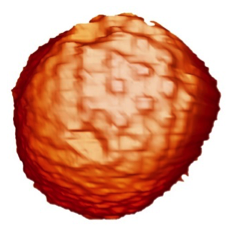EU awards FET-Proactive grant to Wouter Roos and seven other European groups
In the framework of H2020 the FET-Proactive project VIRUSCAN has been awarded to a consortium of 8 European research groups at technological centres, universities, hospitals and companies in the Netherlands, Germany, France, Spain and Greece. In the Netherlands research groups at TNO and at the Rijksuniversiteit Groningen (RUG) are being funded. The group at the RUG is led by Wouter Roos who is looking forward to cooperate with the other groups in this challenging project. Viruscan will be supported by the EU with 7 M€ of which 0.6 M€ will be for the RUG.

In the Viruscan project Optomechanics will be applied in Virology. Lately, optomechanics has served to fundamental advancements in physics, from gravitational wave detection to the study of mechanical quantum ground states but it has not yet delivered its full applicability potential.
The current project aims to apply frontier advancements in optomechanics to the biosensing and diagnostic fields and to create a new interdisciplinary research community with the goal to advance optomechanics, nanoelectromechanics, atomic force microscopy, native mass spectrometry and biophysics towards clinical applications.
Viruscan aims to provide novel technology capable of identifying viral particles and to assess their infective potential through the characterization of two physical parameters: mass and stiffness. Stiffness of viral particles has been recently known to act as a regulator of their infectivity at different stages of the virus life cycle. In parallel, advancements in nanoelectromechanical systems have recently demonstrated that stiffness and mass information from nanoscale adsorbates can be disentangled. Targeting intrinsic physical properties of viral particles will allow developing an open platform that will tackle any virus and their mutations.

The joint research and development project will have impact at multiple levels and aims at the following: Providing a personalized treatment to the patients, reducing the use of non-effective antibiotics, increasing safety in blood transfusions, allowing a quick and trustworthy response to emergency situations (e.g. recent EBOLA in West Africa and the ZIKA in Brazil), reducing the spread of viral infections, reducing costs per analysis and screening of a wide range of pathogens.
More info? Contact Prof. Wouter Roos.
More news
-
11 December 2025
Stormy planets and an unexpected atmosphere
-
09 December 2025
University of Groningen Professor at COP30: ‘There is always drama’
